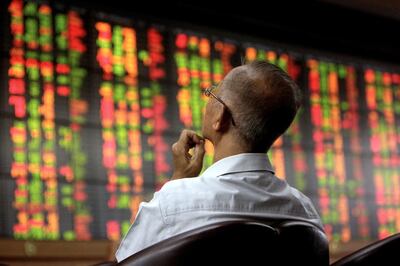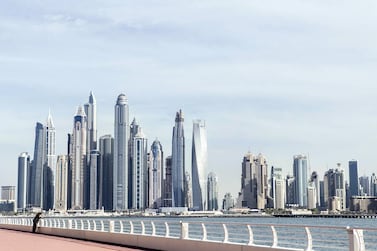Some problems are nice to have. If you have a large lump sum to invest, say $100,000, it’s a problem but don’t expect much sympathy.
It is still a major responsibility and one you should not take lightly. The easy thing to do is let it stay idle in the bank while you make up your mind. Given today’s near-zero interest rates, the real value of your $100,000 is likely to fall over time due to inflation if you do that.
So, how do you solve your very pleasant problem?
Your decision may partly depend on where the money has come from. If it is an inheritance, you might feel an extra layer of responsibility as this could be money that a loved one has built up over their lifetime. You certainly don’t want to blow that gambling on cryptocurrencies or any other high-risk asset.
Similarly, it will depend on your personal financial position. If you have borrowed money on a credit card or other expensive short-term credit, the best thing you can do is pay that down right away.
Credit card annual percentage rates can be as high as 40 per cent and no investment can guarantee that level of return. In fact, they can’t guarantee more than 1 or 2 per cent these days, although the stock market may deliver more over the longer run.
This does not apply to mortgage debt, though. Provided it isn’t too large, you can probably let that run given today’s low interest rates.
Demos Kyprianou, a board member of SimplyFI, a non-profit community of personal finance and investing enthusiasts, says a key early step is to build a pot of emergency cash to tide you over in case of an emergency such as sickness or redundancy. “As a rule of thumb, you should have enough money in an easy access account to cover between six and nine months of spending.”
Your next step is to work out your investment term. Do you plan to buy a property in a year or two, or are you building long-term wealth for retirement?
Professor Stephen Thomas, associate dean, MBA Programmes at City, University of London’s Business School (formerly Cass), says the longer your investment horizon, the more risks you can afford to take. “Imagine you had put your $100,000 entirely into shares in February. Your money would have fallen 30 per cent in the March crash. How would you feel about that?”
Maybe not so bad, given that stock markets have rallied strongly and you would have recovered most of your losses. “If you are investing for, say 20 or 30 years, the March crash will be a minor blip.”
The answer is down to you. However, nobody wants to see their $100,000 lose $30,000 of its value in a matter of days, and this is where the old investment rule applies: do not put all your eggs in one basket.
Mr Thomas says the key asset classes such as shares, bonds, cash, gold and property perform in different ways at different times, so it helps to have a diversified blend of them. “This protects you against sudden falls in a single asset class because others may rise to compensate.”
How you strike the right balance will depend on factors such as your attitude to risk and your age. “If you plan to retire next year, you don’t want your $100,000 all in shares as its value could fall in half if we get another stock market crash,” Mr Thomas says.
Many will still want to maintain stock market exposure to retirement and beyond to help their money grow, while shifting towards lower risk assets such as bonds and cash.
Mr Kyprianou suggests a simple way of doing this is by splitting your money between two low-cost, globally diversified exchange-traded funds (ETFs), one tracking shares and the other tracking bonds.
He suggests a popular global equity fund such as the Vanguard FTSE All-World UCITS ETF or iShares Core MSCI World UCITS, which track the performance of thousands of companies across different countries and sectors.
You could then get bond exposure through the iShares Global Govt Bond UCITS ETF, which invests in government bonds from G7 countries – the US, Canada, France, Germany, Italy, Japan and the UK – or the USD Treasury Bond UCITS ETF, which invests 100 per cent in US government bonds.
Mr Kyprianou says younger investors could go 80 per cent equities and 20 per cent bonds, then shift to 60 per cent equities and 40 per cent bonds as they near retirement.
James Norton, senior investment planner at ETF provider Vanguard, says risk will determine how much you will generate in the longer run. “How much you hold in shares, which are higher risk, and how much in bonds, which are lower risk, is the most important investment decision you will make.”
He says another key question is whether to invest all at once or drip feed it into the market over many months to reduce the impact of any crash. The latter is tempting, but he warns: “More often than not, it’s more efficient for long-term investors to invest all in one go. Markets go up more than they go down, and this way you get the most from your money.”

As always, it’s a personal decision. “If that’s too nerve wracking, it’s also fine to drip feed your cash into investments over a longer period of time,” Mr Norton says.
Most people should have some exposure to shares, so what should you buy?
Devesh Mamtani, chief market strategist at Century Financial, says more cautious investors could choose a stock market fund with relatively low volatility.
He suggests iShares MSCI USA Min Vol Factor ETF, which tracks large US corporations such as NextEra Energy, T-Mobile US, McDonald’s and Microsoft. Or try Invesco S&P 500 Low Volatility ETF, whose top holdings include Verizon Communications, Costco Wholesale, Tyler Technologies and Bristol-Myers Squibb.
Mr Mamtani says higher-risk investors might consider ARK Invest Innovation ETF, which focuses on DNA technologies, automation and manufacturing, internet infrastructure and financial services technologies.
Similarly, the iShares Russell 1000 Growth ETF offers exposure to growth companies in information technology.
For your bond holdings, Mr Mamtani suggests the SPDR Portfolio Aggregate Bond ETF, which invests in US investment grade bonds such as US Treasuries, corporate bonds and asset-backed securities. It currently yields 2.51 per cent.
When buying ETFs, non-US citizens should buy those domiciled in Dublin rather than New York as the latter will expose you to US taxes.
Many will be tempted by gold, even though the price has fallen lately to around $1,800. That is around 13 per cent below its August high of $2,084, as hopes for the three coronavirus vaccines take some shine off this traditional safe haven.
Mr Kyprianou does not see a major role for gold when you are building your wealth, but says it may be worth having some exposure as you near retirement to reduce risk. “I wouldn’t invest much more than 10 to 15 per cent of your $100,000, though.”
Remember, gold does not pay any income, but acts as a useful diversifier by protecting the capital value of your investments in a downturn.
Property is always a tempting investment, but Mr Kyprianou says this is a highly personal decision and will depend on which country, city and district attracts you, and where you plan to retire. “Building an emergency pot of cash, then spreading the rest of your money across equity and bond ETFs, plus some gold maybe, is the best way to go.”
As ever, the decision is yours. Remember to make it, rather than leave the money to die a slow death in cash. With a little research, you can turn your problem into an opportunity.







